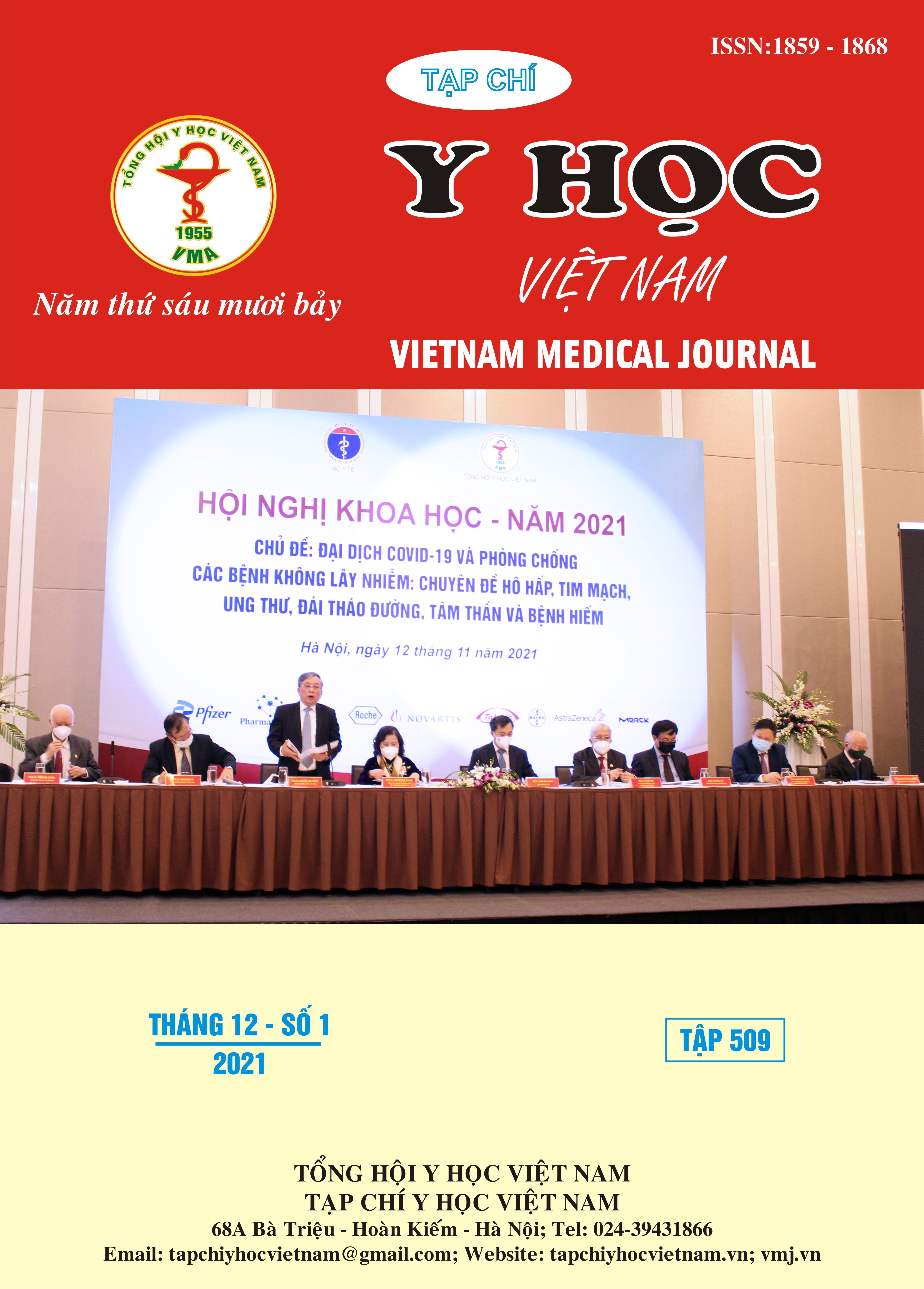FREQUENCY OF FAST FOOD CONSUMPTION AND RELATED FACTORS OF STUDENTS OF HUNG VUONG HIGH SCHOOL, HO CHI MINH CITY
Main Article Content
Abstract
Background: Fast food has become more and more popular all over the world and is preferred by many people among whom Vietnamese people contribute a considerable proportion. The consumption of fast food without restriction increases the risk of some diseases like overweight, obesity, hypertension and gastrointestinal problems. Objectives: To determine the frequency of fast food consumption and other related factors of students of Hung Vuong high school in the year 2021.Materials and methods: Cross sectional descriptive study conducted on 420 students of Hung Vuong high school, district 5, Ho Chi Minh city, in the year 2021. Results: The frequency of fast food consumption of 1-3 times per month accounted for the highest percentage (43.3%). The proportion of overweight students accounted for 15.7%, and the figure for obese ones constituted 4.3%. Fried chicken and french fries were the 2 kinds of food that were most commonly consumed with the rates of 81.1% and 69.2% respectively. The most commonly visited fast food chain was KFC with 70.6%. The most popular reason for consuming fast food was the taste and flavor (accounting for 85%). The study found the connection between the frequency of fast food consumption and that of eating homemade food (p<0.001) and the factor of parents’ consuming fast food frequently (p<0.05). Conclusions: In order to reduce the frequency of fast food consumption of children, families should be proactive in preparing and eating homemade food together, and parents should also decrease their own consumption of fast food.
Article Details
Keywords
Fast food, nutrition, overweight, obesity
References
2. Nguyễn Thanh Long Sơn (2018) Tỉ lệ thừa cân béo phì và các yếu tố liên quan của học sinh trường THPT Nguyễn Văn Cừ huyện Hóc Môn thành phố Hồ Chí Minh năm 2018, Khóa luận tốt nghiệp bác sĩ y học dự phòng
3. Sở Y tế Hà Nam (2021), 13 lý do nên từ chối thức ăn nhanh, https://syt.hanam.gov.vn/ Pages/13-ly-do-nen-tu-choi-thuc-an-nhanh.aspx, Truy cập ngày 17 tháng 08 năm 2021.
4. Amare Tariku, Solomon Mekonnen Abebe (2018) "Overweight/obesity among school aged children in Bahir Dar City: cross sectional study". Italian journal of pediatrics, 44, (1), 17.
5. Foad Alimoradi, Parisa Jandaghi, Adeleh Khodabakhshi, Maryam Javadi, Seyed Amir Hossein Zehni Moghadam (2017) "Breakfast and fast food eating behavior in relation to socio-demographic differences among school adolescents in Sanandaj Province, Iran". Electronic physician, 9, (6), 4510.
6. Nitin Joseph, Maria Nelliyanil, et al (2015) "Fast food consumption pattern and its association with overweight among high school boys in Mangalore city of southern India". Journal of clinical and diagnostic research: JCDR, 9, (5), LC13.
7. Supa Pengpid, Karl Peltzer (2017) "The prevalence of underweight, overweight/obesity and their related lifestyle factors in Indonesia, 2014–2015". AIMS Public Health, 4, (6), 633.
8. Kathryn Walton, Nicholas J Horton, Sheryl L Rifas-Shiman, et al. (2018) "Exploring the role of family functioning in the association between frequency of family dinners and dietary intake among adolescents and young adults". JAMA network open, 1, (7), e185217-e185217.


